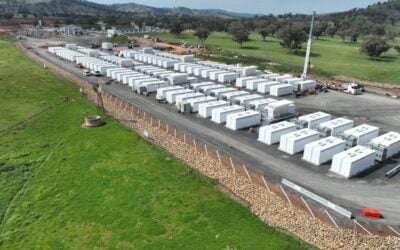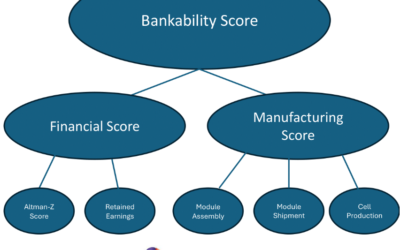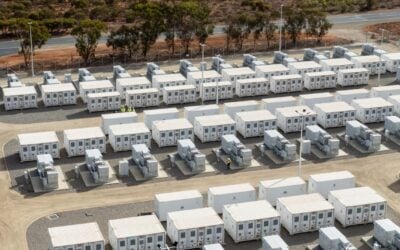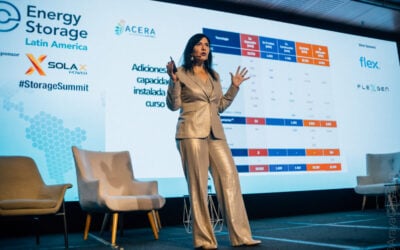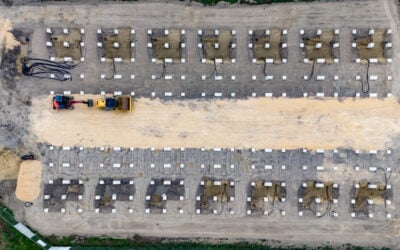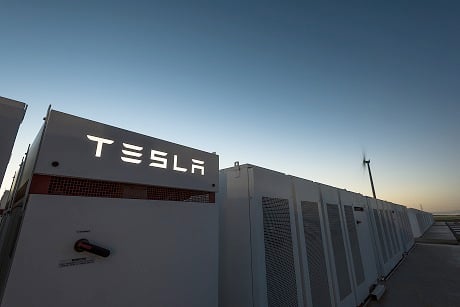
Amidst experiencing Model 3’s “production hell”, launching a semi truck, a new Roadster and a portable battery pack, Tesla’s work on a 129MWh energy storage system in South Australia appears on track to be completed in time.
South Australia’s government turned to the idea of a giant lithium-ion battery storage system backed with diesel to balance the grid and mitigate serious energy security concerns following major blackouts in September 2016. The idea was put forward in the South Australian government’s Energy Plan in March this year.
Following a Twitter exchange with a local tech entrepreneur, Tesla CEO Elon Musk famously ended up promising to deliver a 100MW / 129MWh project within 100 days of contracts being signed or deliver it for free. The clock started ticking on 29 September when a grid interconnection agreement was signed with transmission network provider ElectraNet and approved by the Australian Energy Market Operator (AEMO). Tesla switched from its usual battery cell supplier Panasonic to Samsung SDI, in order to expedite deliveries and construction.
“Congratulations to the Tesla crew and South Australian authorities who worked so hard to get this manufactured and installed in record time!” Musk tweeted this morning.
Try Premium for just $1
- Full premium access for the first month at only $1
- Converts to an annual rate after 30 days unless cancelled
- Cancel anytime during the trial period
Premium Benefits
- Expert industry analysis and interviews
- Digital access to PV Tech Power journal
- Exclusive event discounts
Or get the full Premium subscription right away
Or continue reading this article for free
System to to be officially inaugurated next week
This morning, South Australia’s premier Jay Weatherill announced that Tesla’s utility and industrial scale Powerpack systems deployed for the project at Hornsdale Wind Farm will be “energised for the first time in the coming days”. The project’s battery system is about to enter a phase of regulatory testing ahead of it being put into use.
Even while testing is being carried out to ensure it meets the requirements and standards of the transmission grid operator and the approval of AEMO, the system will be helping provide unspecified “system security services”, Weatherill’s statement said.
An official launch event is scheduled to take place next week at the site of the battery near Jamestown, which is some 200km north of Adelaide. Alongside Weatherill, in attendance will be representatives from Tesla, project developer Neoen and electrical engineering contractor Consolidated Power Projects.
“While others are just talking, we are delivering our energy plan, making South Australia more self-sufficient, and providing back up power and more affordable energy for South Australians this summer. The world’s largest lithium ion battery will be an important part of our energy mix, and it sends the clearest message that South Australia will be a leader renewable energy with battery storage,” Jay Weatherill said.
“An enormous amount of work has gone in to delivering this project in such a short time, and I look forward to visiting Jamestown next week to personally thank those who have worked on this project.”
Weatherill has already been forced to publically defend both the process through which Tesla-Neoen were awarded contracts as well as the scope of the project itself. There have been an enormous amount of space in Australian news outlets given over to arguments that the short duration of the battery’s storage will make it ineffective as a capacity asset.
Experts including Dylan McConnell, based at the University of Melbourne’s Energy Transition Hub, have tried to explain that since the role of the lithium system will be to respond quickly to adjust minor imbalances in the grid: “The amount of energy is less important. They are not meant to provide electricity all the time. They provide fast response power when it is needed most.”
S Australia premier condemns national policy
While Weatherill hailed the Tesla battery project, a separate statement given today by the premier condemned the recent National Energy Guarantee policy put forward by national prime minister Malcom Turnbull’s administration.
“Renewable energy guarantees lower power prices, cleaner power and more jobs,” Weatherill said.
“Malcolm Turnbull’s National Energy Guarantee aims to stall the development of renewable energy and extend the life of coal plants. This will increase emissions and delay the price reductions that renewable energy is delivering.”
Weatherill said that South Australia is moving ahead to a clean energy future regardless of Turnbull’s plan, arguing that investments in renewables have helped lower wholesale electricity prices in his state already. Australia’s Federal, State and Territory policymakers will meet next week in Adelaide to discuss the country’s climate change and energy future.
‘Production hell’ and an ‘Initial Hat Offering’
Meanwhile, Tesla’s near-completion of the 129MWh Hornsdale Wind Farm battery comes as the company still struggles to get more than a few dozen Model 3 EVs off the production line a month and solar install figures have fallen dramatically since Tesla’s takeover of SolarCity.
In the midst of all this, Tesla just launched its new electric semi truck, surprise-launched a new Roadster model and started selling a US$45 portable battery pack shaped like a Supercharger tower. Despite challenges in other areas, the company reported a 138% year-on-year increase in energy storage deployments in its most recent quarterly earnings report.
Musk has already started tweeting about adding flying capabilities to next versions of the Roadster and has just hosted the first IHO (‘Initial Hat Offering’) to fund the work of his Boring Company tunnelling and exploration venture. It has been claimed by Tesla and SpaceX that hat sales have already raised US$300,000 since October, with baseball caps bearing the Boring logo sold for US$20 apiece.
The world’s most boring hat https://t.co/rnHPgyhx4Z
— Elon Musk (@elonmusk) October 18, 2017

